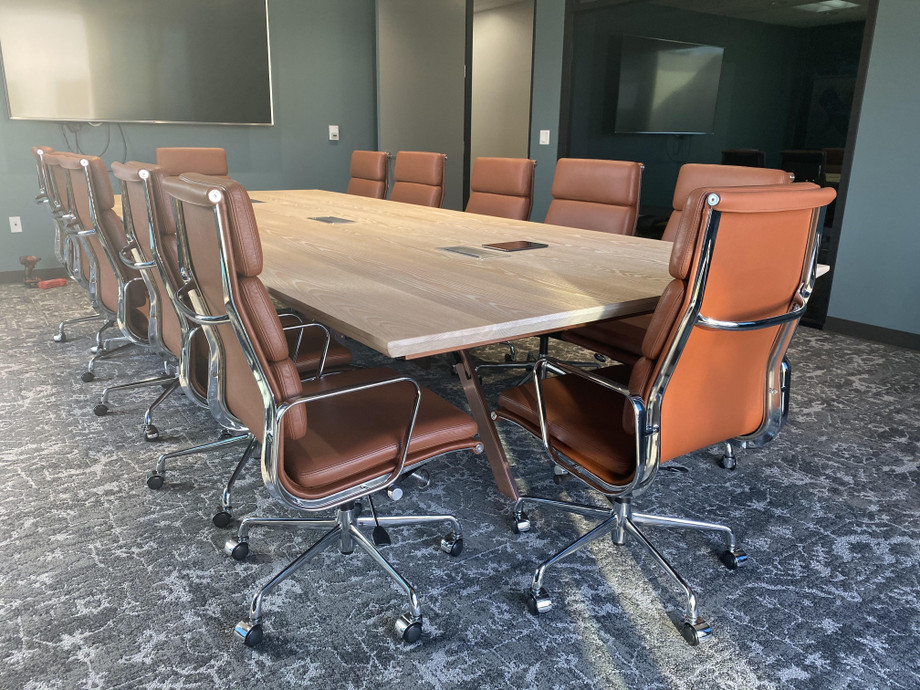Selecting the right table size for a meeting room may seem simple, but it can greatly impact the room’s usability and overall atmosphere. Whether you’re designing a compact space for team huddles or a large boardroom, getting the size right can enhance productivity and comfort for everyone in the room. Let’s explore a few essential factors to help you determine the best meeting room table size to suit your unique business needs.
1. Assess the Room Dimensions
The first step to choosing the perfect table size is to measure your meeting room’s dimensions accurately. Knowing the room’s length, width, and layout will help you visualize what table shape and size would fit comfortably. Keep in mind that leaving ample space around the table for movement is essential for ensuring comfort and easy access. Experts recommend maintaining a clearance of at least three feet around the table to allow for seating adjustments and easy movement.
2. Consider Seating Requirements
Another key consideration is the number of people you need to accommodate regularly. A table that’s too small may feel cramped, while an oversized table could make the room appear crowded and unwelcoming. Generally, each person needs approximately two feet of space at the table to work comfortably. This is especially relevant for businesses that frequently hold team meetings or collaborate with clients in a single space.
If your meeting room is used for both large and small gatherings, consider a modular or extendable table. This option can adapt to various seating needs without compromising space or style.
3. Think About the Table Shape
The shape of your table can also impact the dynamics of your meeting room. Rectangular tables are ideal for larger rooms and provide a more formal atmosphere, while round tables work well in smaller, more collaborative spaces. Oval or boat-shaped tables can be a good middle ground, offering enough space for multiple people while giving the room a sleek and modern look.
Choosing a shape that aligns with the room’s purpose will support your company’s goals, whether they’re collaborative discussions, presentations, or formal meetings. For instance, round tables promote an inclusive environment, while rectangular ones might lend themselves to more structured settings.
4. Balance Functionality and Style
When selecting a meeting room table, functionality and design should go hand in hand. Choose a table that complements the room’s aesthetic and supports any technological requirements, such as cable management solutions for devices. The right table should reflect your brand’s style, align with the room’s interior, and meet your team’s functional needs. For instance, glass tables create a modern, sleek look but may require more maintenance, while wood offers a classic, durable option.
5. Test Out Options
Once you’ve narrowed down your choices, it’s essential to test your options before making a final decision. Many furniture retailers allow you to visualize different table styles and sizes within your room, whether through online tools or in-store consultations. Testing will give you a clearer idea of how the table will look and feel, helping to avoid regrets after purchasing.
Final Thoughts
Determining the ideal meeting room table size involves understanding your room dimensions, seating needs, table shape, and the balance between functionality and style. Taking the time to find the perfect fit can create a productive, professional, and visually appealing meeting environment that aligns with your company’s goals and values.
For more inspiration and ideas on furnishing your office spaces, check out blog post top tips on creating comfortable and functional work environments.

